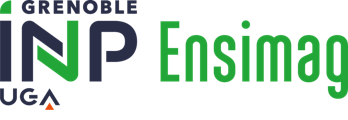Number of hours
- Lectures 36.0
- Projects -
- Tutorials -
- Internship -
- Laboratory works -
- Written tests -
ECTS
ECTS 6.0
Goal(s)
A robot is a mechatronic system with perception, decision and action capabilities design to perform in an autonomous way different tasks in the real world. Whatever the robot (e.g. mobile robot, industrial arm, mobile manipulator) and the task that it has been assigned, the robot will have to move (move its whole body or a part of its body, e.g. arm, hand). Accordingly, motion autonomy is an essential skill for a robot. To achieve motion autonomy, it is required to solve a number of challenging problems in areas as diverse as sensor data processing, situation understanding, motion planning, obstacle avoidance and control.
The purpose of the course is to present the main concepts, tools and techniques that Roboticists have developed in the past fifty years in order to address these challenges. The course has three parts that focus on different aspects.
Thierry FRAICHARD
Content(s)
The first part is about robot state estimation and world modeling. It presents the most popular approaches to perform state estimation. The basic equations of the Bayes filter are derived first. Then, the Extended Kalman Filter is introduced. These methods are then used to explore the following fundamental estimation problems: 1) robot localization, 2) Simultaneous Localization and Mapping (SLAM), 3) cooperative localization, and 4) simultaneous localization and self-calibration. The structural properties of these problems are studied. In particular, it is shown how the computational complexity scales with the size of the state. Finally, more theoretical aspects related to estimation with special focus on state observability are discussed.
The second part focuses on the decision-making aspects. Motion planning is addressed first in the seminal configuration space framework, the main configuration space-based motion planning techniques are reviewed. Then, to deal with the uncertainty of the real world and the discrepancy between the world and its model, reactive collision avoidance techniques are presented. Finally, motion safety is formally studied thanks to the Inevitable Collision State concept.
The third part is an introduction to control theory for articulated robots. The objectives are to understand basic concepts about the kinematics and dynamics of articulated robots and basic control theory in order to approach classical control methods, as well as a few selected advanced topics. The kinematics of articulated robots is introduced first, covering advanced topics such as singularities, hierarchies of objectives, inequality constraints. A brief reminder about Newton, Euler and Lagrangian equations of motion as well as basic Lyapunov stability theory is also provided before discussing standard motion control schemes such as Proportional-Derivative, Computed Torque, Operational Space and Task Function approaches. Advanced topics such as space robots, biped robots, Viability theory and optimal control are also touched.
PrerequisitesNone.
Evaluation : Examen Ecrit (03h00)
Resit : Examen Ecrit (01h30)
Final written examination (03h00).
Catch up written examination (01h30).
The exam is given in english only
The course exists in the following branches:
- Curriculum - Master in Computer Science - Semester 9 (this course is given in english only)
- Curriculum - Master in Applied Mathematics - Semester 9 (this course is given in english only)
- Curriculum - Master in Computer Science - Semester 9 (this course is given in english only)
Course ID : WMM9MO62
Course language(s): 
The course is attached to the following structures:
- Team Architecture-System-Auto
You can find this course among all other courses.



